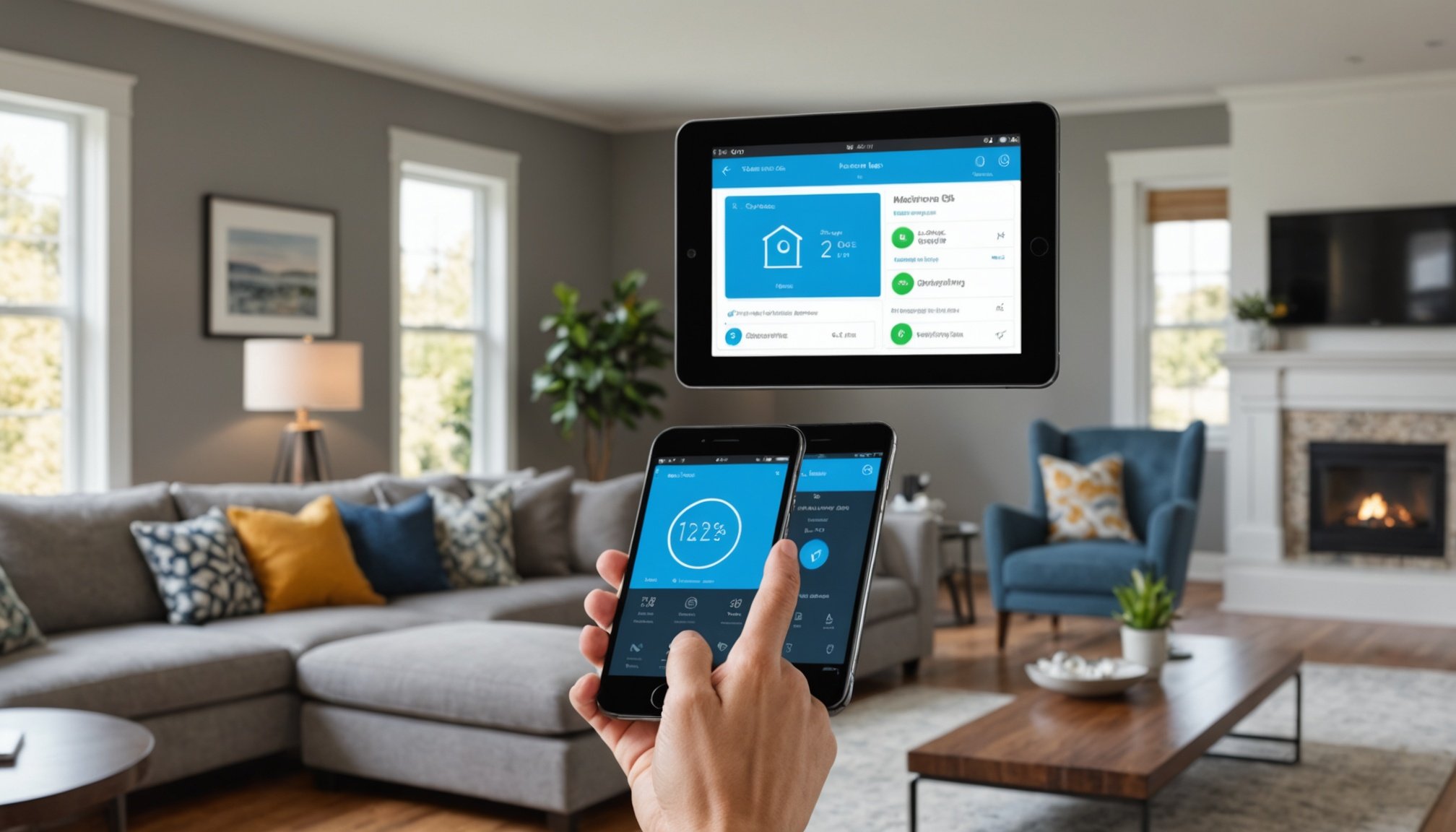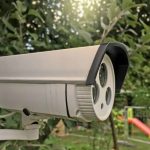Smart home automation transforms daily living, offering efficiency and convenience at your fingertips. But managing these innovative systems can feel overwhelming without the right guidance. This comprehensive guide empowers you to master real-time smartphone monitoring, enabling seamless control of your devices. Discover practical tips and insights to enhance your smart home experience, ensuring that every aspect operates harmoniously. Take charge and elevate your living space to a new level of ease and sophistication.
Understanding Smart Home Automation
Smart home automation is transforming how we interact with our living spaces. Smart Home Basics involve integrating technology to control home functions like lighting, security, and climate. This not only enhances convenience but also boosts energy efficiency and security.
Additional reading : How to Set Up a Smart Doorbell with Video Monitoring Using Your Smartphone?
Home Automation Concepts revolve around interconnected devices that communicate over a network, often the internet. These systems allow users to automate tasks and remotely manage home appliances. For instance, you can set your lights to turn on when you arrive home or adjust your thermostat from your smartphone.
Key components of smart home systems include sensors, actuators, and controllers. Sensors detect changes in the environment, such as motion or temperature, and send this information to a controller. The controller processes the data and sends commands to actuators, which then perform actions like opening blinds or dimming lights.
In the same genre : What Are the Techniques to Use Your Smartphone as a Baby Monitor?
Smartphones play a crucial role in smart home management. They act as remote controls, allowing users to monitor and adjust their home settings from anywhere. Apps designed for smart home systems provide an interface for users to interact with their devices, making home automation accessible and user-friendly. With these innovations, managing a smart home becomes seamless and efficient.
Key Smart Home Devices
Incorporating smart devices into your home can significantly enhance functionality and convenience. Essential home automation products include smart speakers, thermostats, lights, and security cameras. These devices offer features like voice control, remote access, and automation, making everyday tasks effortless.
When selecting smart home devices, consider features such as ease of use, energy efficiency, and integration capabilities. Look for products that offer seamless connectivity with other devices and platforms. For instance, a smart thermostat should be compatible with your existing heating system and work with voice assistants like Alexa or Google Assistant.
Compatibility is crucial when building a smart home ecosystem. Ensure that your chosen devices can communicate with each other and integrate with various platforms. This enables a cohesive experience where devices work in harmony, such as lights dimming automatically when a movie starts.
To maximise the benefits of smart home technology, opt for devices that support common standards like Wi-Fi, Zigbee, or Z-Wave. This ensures that your system remains flexible and future-proof, allowing you to add new devices as technology evolves. By carefully selecting and integrating smart devices, you can create a connected home that is both efficient and enjoyable.
Setting Up Real-Time Monitoring
Real-time monitoring of your smart home can be effortlessly managed using your smartphone. To begin, ensure your smart devices are connected to your home network. Most devices come with a dedicated app for smartphone monitoring. Download these apps from your device's app store and follow the on-screen instructions to pair your devices.
Once connected, explore recommended apps like SmartThings, Google Home, or Apple HomeKit. These apps provide a real-time management interface, allowing you to monitor and control your devices remotely. They often support features like notifications for unusual activity or energy usage updates.
When configuring your system, consider these best practices:
- Secure your network: Use strong passwords and enable encryption to protect your data.
- Regular updates: Keep your apps and device firmware updated to benefit from the latest features and security patches.
- Customise alerts: Tailor notifications to your preferences, ensuring you receive relevant information without being overwhelmed.
By following these steps, you can effectively set up and manage your smart home system, ensuring a seamless and secure experience. With real-time monitoring, you stay informed and in control, enhancing both convenience and peace of mind.
Integrating Smart Devices
Integrating various smart devices into a unified system requires thoughtful planning and execution. The key to successful device integration lies in ensuring smart home interoperability. This means your devices should work seamlessly together, regardless of brand or type.
Strategies for integrating smart devices often start with choosing a central hub or platform, such as SmartThings or Apple HomeKit. These platforms act as a command centre, allowing you to control multiple devices from a single interface. When selecting devices, consider those that support common protocols like Zigbee and Z-Wave. These protocols facilitate communication between devices, ensuring they work harmoniously.
Real-world examples of successful device integration demonstrate the benefits of a cohesive system. For instance, a home where lights, security cameras, and thermostats are integrated can automatically adjust lighting and temperature when the security system is armed. This not only enhances convenience but also improves energy efficiency and security.
To maximise the potential of your smart home, focus on interoperability. Ensure all devices can communicate effectively, creating a seamless experience. By prioritising compatibility and using established protocols, you can build a system that is both efficient and future-proof.
Troubleshooting Common Issues
Navigating smart home troubleshooting can be daunting, but understanding common device issues simplifies the process. Frequently faced problems include connectivity glitches, unresponsive devices, and compatibility concerns. Addressing these issues requires a methodical approach.
Begin with basic checks: ensure all devices are powered on and connected to the same network. If a device is unresponsive, restart it. Often, a simple reboot resolves minor glitches. For connectivity problems, verify your Wi-Fi signal strength and consider relocating devices closer to the router.
When dealing with compatibility issues, confirm that your devices support the same communication protocols, such as Zigbee or Z-Wave. If devices fail to communicate, update their firmware through the manufacturer's app. Keeping software up-to-date ensures optimal performance and security.
If these steps don’t resolve the issue, consult the device's manual or support website for specific troubleshooting guidance. Persistent problems may require professional intervention. Seek expert help if you encounter complex network configurations or hardware malfunctions.
By following these troubleshooting tips, you can effectively address common smart home issues, ensuring a smooth and efficient system operation.
Security and Privacy Considerations
Smart home devices offer convenience but also introduce potential security risks. These include unauthorized access, data breaches, and privacy invasions. Understanding and addressing these risks is crucial for protecting your home and personal information.
Key Security Risks: Smart home devices can be vulnerable to hacking if not properly secured. Hackers may exploit weak passwords or unsecured networks to gain access to your devices and personal data. Additionally, data collected by smart devices can be targeted by cybercriminals, leading to potential breaches of sensitive information.
Best Practices for Privacy: To maintain privacy, regularly update device firmware and use strong, unique passwords for each device. Enable two-factor authentication where possible and restrict device access to trusted users. Be mindful of the data your devices collect and consider disabling unnecessary data-sharing features.
Encryption and Security Features: Many smart home apps include encryption to protect data transmission. Look for devices and apps that offer end-to-end encryption, ensuring that data is secure from the point of collection to its final destination. Understanding these features can help you make informed decisions about the security of your smart home ecosystem. Prioritizing security and privacy measures will safeguard your smart home environment.
User-Friendly Interfaces
In the realm of smart home technology, a seamless user experience is paramount. Smart home apps serve as the control hub, making intuitive interfaces vital for efficient management. A well-designed app can simplify complex systems, ensuring users can navigate and control their devices with ease.
Key features that enhance the user experience include customisable dashboards, clear navigation paths, and responsive design. Customisable dashboards allow users to tailor their interface to suit their preferences, displaying the most relevant information at a glance. Clear navigation paths ensure that users can easily find and operate different functions without confusion. Responsive design adapts to various devices, providing a consistent experience whether on a smartphone, tablet, or computer.
When comparing top-rated smart home apps, consider options like SmartThings, Google Home, and Apple HomeKit. Each offers unique strengths: SmartThings is lauded for its extensive device compatibility, Google Home excels in integrating with Google services, and Apple HomeKit is praised for its robust security features. By evaluating these apps, users can select the one that best aligns with their needs, ensuring a user-friendly and efficient smart home experience.
Cost Considerations for Smart Home Setup
Understanding Smart Home Costs is essential for anyone looking to automate their living space. Initial expenses can vary widely, depending on the complexity and scale of the system. Basic setups, featuring essential devices like smart bulbs and plugs, offer a budget-friendly entry point. These can cost as little as £100, making them accessible for beginners. More comprehensive systems, incorporating advanced security and climate control, may require a more substantial investment.
When budgeting for automation, consider both upfront costs and potential long-term savings. Energy-efficient smart devices can significantly reduce utility bills over time. For instance, smart thermostats adapt to your schedule, optimising heating and cooling to conserve energy. This not only lowers monthly expenses but also contributes to environmental sustainability.
To manage costs effectively, start with devices that offer the most immediate benefits, such as smart lighting or a thermostat. Gradually expand your system as your budget allows. Prioritising energy-efficient devices can yield financial returns, effectively offsetting initial expenditures. By considering these factors, you can create a smart home setup that balances cost and functionality, ensuring a wise investment in your home's future.
Future Trends in Smart Home Automation
The landscape of smart home trends is rapidly evolving, driven by technological advancements and consumer demand for convenience. Emerging technologies are set to redefine future automation, integrating artificial intelligence (AI) and machine learning to create more intuitive and responsive environments.
One significant trend is the development of AI-powered smart home devices that learn user preferences over time, offering personalised experiences. For example, AI-driven thermostats can predict optimal temperature settings based on historical data and external weather conditions, enhancing comfort and energy efficiency.
Voice control is also advancing, with virtual assistants becoming more sophisticated in understanding and executing complex commands. This evolution in voice technology will enable seamless interaction with a broader range of smart devices, making home management more intuitive.
To stay updated with these innovations, consider subscribing to tech publications, joining online forums, or attending industry expos. These resources provide insights into the latest smart home trends and developments, ensuring you remain informed about cutting-edge technologies.
By embracing these emerging trends and staying informed, homeowners can anticipate the next wave of smart home advancements, ensuring their living spaces remain at the forefront of future automation.











